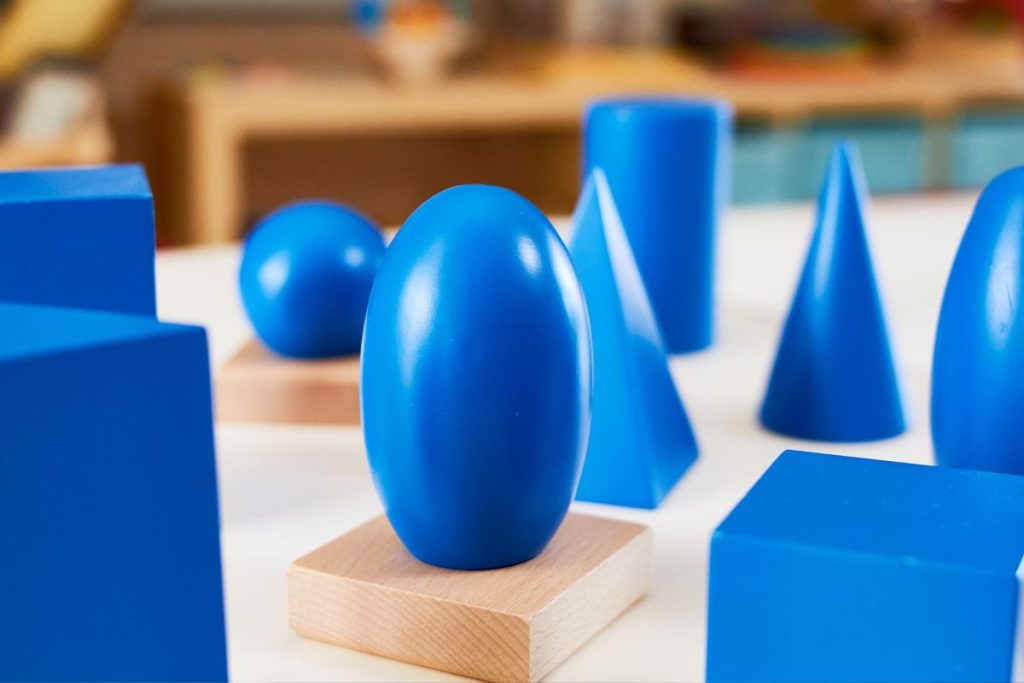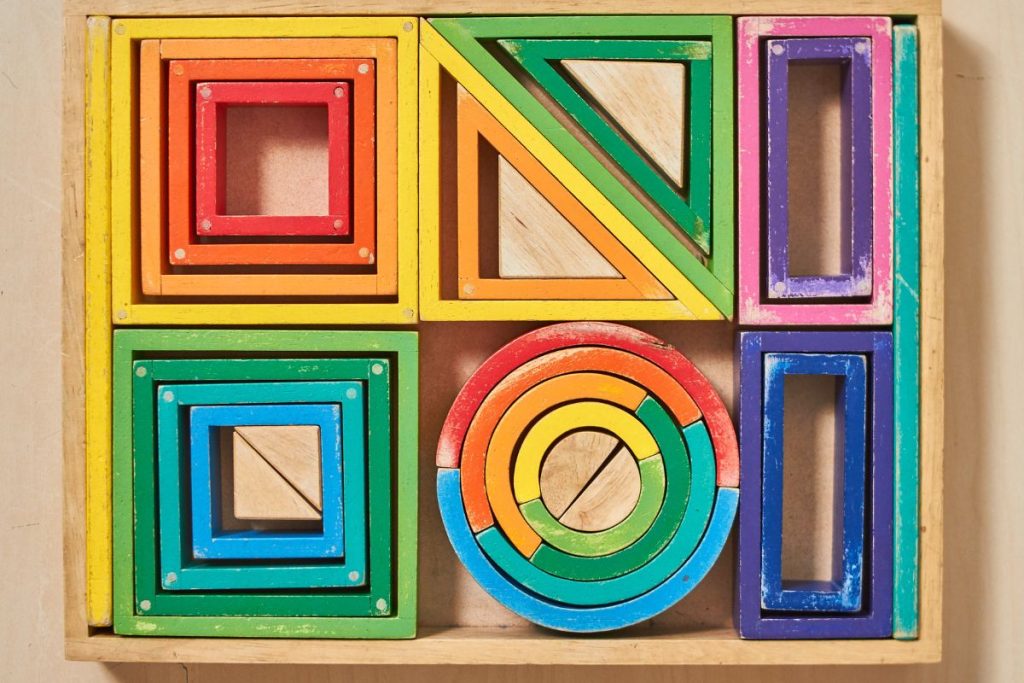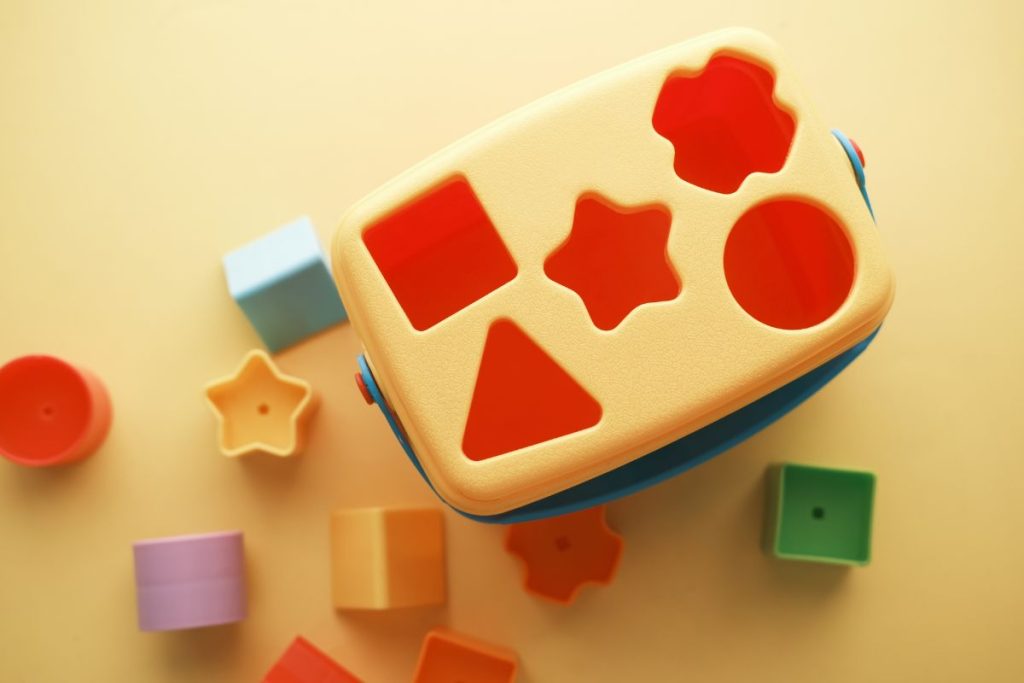In the exciting journey of early childhood education, teaching shapes is a foundational milestone. As a parent or caregiver, you may wonder how to approach this task effectively. Enter the Montessori method – a unique, child-centered approach that fosters a love for learning in a nurturing and engaging environment. In this guide, we’ll walk you through how to teach shapes to toddlers using the Montessori method, making this crucial learning process both fun and fruitful. Buckle up for a fun-filled educational quest that will enhance your toddler’s cognitive development!
Montessori Philosophy on Teaching Shapes

When we talk about the Montessori approach, it’s all about starting where the child is. Begin by introducing simple shapes such as squares, circles, and triangles. You can use everyday objects around your home to illustrate these shapes. For instance, a clock can be used to demonstrate a circle, a book can demonstrate a rectangle, and a slice of pizza can show a triangle.
The Montessori Sensorial Materials
In the Montessori method, it’s about teaching through the senses. This is where Montessori sensorial materials come in. A great starting tool is the geometric cabinet, an effective material that aids children in learning shapes by sight and touch. It consists of six drawers, each housing six cut-out wooden shapes. Children can feel the shapes, trace them, and match them to corresponding shape cards. This hands-on experience allows children to explore, discover, and understand shapes in their own unique way.
Following the Child’s Pace
Remember, with Montessori teaching, respect for the child’s pace is paramount. Some toddlers might show an interest in shapes early on, while others may take a little more time. That’s perfectly fine! Each child’s learning journey is unique, and rushing them can lead to frustration. Make shape learning a fun, shared activity, rather than a structured lesson. This way, your little one will enjoy the process and develop a lasting love for learning.
Incorporating Shapes into the Montessori Environment
Montessori Materials for Teaching Shapes

Let’s delve into the Montessori materials that can aid you in teaching shapes to your toddler. The Geometric Cabinet is a wonderful introduction. It’s a neat collection of wooden shapes, with each drawer holding a different set. Your little one can trace these shapes, feel their contours and match them to corresponding cards. In this way, they get to experience shapes with their hands, making the learning process more tangible and interactive.
Next, you can introduce the Geometric Solids. These 3D shapes, which include the sphere, cube, and cylinder, among others, make for great sensorial activities. Imagine your toddler holding a cube in their hands, feeling its edges, its weight, and comprehending its form. It’s a fun and tactile way to understand 3D shapes, bringing the concept to life.
Real-World Connections
Now, this is where the magic happens. Linking shapes to everyday objects in your toddler’s environment can be a eureka moment for them. Suddenly, they see shapes everywhere. That round clock on the wall? It’s a circle. The book on the shelf? It’s a rectangle. The slice of pizza for lunch? It’s a triangle. Encourage this spontaneous exploration of shapes in their surroundings. It’s a wonderful way to make learning relevant and exciting.
Remember, the heart of teaching shapes the Montessori way is all about following your child’s pace, fostering a love for learning, and making it a fun, shared experience. Whether you’re using Montessori materials or simply pointing out shapes in everyday objects, keep it natural, engaging, and respectful of your toddler’s unique journey. Happy Teaching!
Hands-on Activities for Teaching Shapes

Exploring Basic Geometric Shapes
Let’s start with the basics. Introduce your toddler to simple geometric shapes like circles, squares, and triangles. You can take a playdough and mold it into these shapes, or better yet, let your child do it. This playful interaction not only sharpens their fine motor skills but provides a tactile experience, making the learning process dynamic and hands-on.
Shape Sorting and Recognition
Next up is shape sorting. This can be a fun game where you can use a shape sorter toy that comes with different shaped blocks to fit into corresponding holes. Encourage your child to recognize and sort the shapes correctly. For instance, the round block goes into the round hole, and the square block fits into the square hole. This activity reinforces shape recognition and builds problem-solving skills.
Tracing and Drawing Shapes
Another engaging activity involves tracing and drawing shapes. Start with a stencil of simple shapes. Let your toddler trace these shapes on a piece of paper. Over time, encourage them to try drawing the shapes freehand. A circle may look more like a wobbly potato initially, and that’s okay! The key is to make the process enjoyable and pressure-free.
Remember, teaching shapes to your toddler doesn’t need to be a structured lesson. It can be spontaneous, fun, and integrated into daily play and exploration. The Montessori way is all about following your child’s pace, promoting a love for learning, and making it a shared joyous journey.
Exploring Shapes in Nature
Venturing outdoors with your toddler opens up a whole new world of learning opportunities. Nature is rich with shapes, making it the perfect classroom. For example, you can point out the circular shape of the sun or moon in the sky, the rectangular shapes of bricks in a wall, or the triangular shapes of mountain peaks on a distant horizon. Collect leaves during a walk and talk about their different shapes. This helps children connect what they have learned indoors to the real world, making shapes an exciting part of their everyday vocabulary.
Creating Art with Shapes
Art activities are a wonderful way to learn about shapes. Provide your toddler with some shape stamps or sponge shapes and let them stamp away on a piece of paper. They’ll not only learn to recognize the shapes but also get a sense of their size and how they can be used to create other objects. For instance, a circle and a triangle together can form an ice-cream cone!
Through these interactive activities, teaching shapes to toddlers can be a fun and engaging process. Always remember to follow your child’s pace and interest, making learning a joyful journey rather than a task. The Montessori way emphasizes on the joy of discovery, so let’s make learning shapes an adventure your little ones will always cherish!
Geometric Cabinet
Guided exercises with the Geometric Cabinet can be an effective way of teaching shapes to toddlers in a fun, interactive manner. For example, encourage your child to trace the shapes with their fingers, feeling the edges and contours. This provides them with a tactile learning experience and helps them understand the physical properties of each shape. You can tell them stories about each shape or, perhaps, associate each shape with a character in their favorite cartoon to make the learning process more engaging.
Shape Hunt
Visual discrimination and matching skills are key aspects of learning shapes. A great activity to promote these skills is to have a ‘shape hunt’ around the house. Place various objects of different shapes around the room and let your child find and match these objects to their corresponding shapes in the Geometric Cabinet. For instance, a round cookie can match with a circular shape. This activity is not only fun but also reinforces their understanding of shapes and enhances their matching skills. Remember to make the activity a joyful experience rather than a task, praising their efforts, and encouraging their curiosity.
Shape-Themed Storytime
Introducing shapes through storytime can be an enriching and entertaining activity. There are numerous children’s books available that beautifully integrate shapes into the narrative, making the learning process more relatable and fun. Select a book that your toddler loves and read it together, pointing out the shapes within the storyline and illustrations. This will not only help in shape recognition but also instil a love of reading from a young age.
Shape Puzzles
Shape puzzles are a fantastic way to enhance your toddler’s problem-solving skills while they learn about shapes. These puzzles typically come with different shapes that fit into corresponding cavities. Encourage your child to identify and place the shapes in their respective slots, applauding their efforts each time they get it right. This will boost their confidence and make the learning process more enjoyable. Remember, the goal is not perfection but the enjoyment of discovering and learning something new.
Building with Shapes

Building and construction activities are great for teaching shapes. Provide your toddler with building blocks in various shapes and let them explore how these shapes fit together to create objects and structures. This hands-on activity promotes spatial understanding, fine motor skills, and creativity. You could start by guiding them to create simple structures like a house or a tower and gradually encourage them to create more complex structures independently. This will foster a sense of accomplishment and further their understanding of shapes in an engaging and fun way.
Conclusion
In conclusion, teaching shapes to toddlers through the Montessori method can be a delightful and enriching journey for both you and your child. It’s not about structured lessons or achieving perfection, but about fostering a love for learning and exploration. The activities mentioned, such as tracing and drawing shapes, exploring shapes in nature, creating art with shapes, using the geometric cabinet, having shape hunts, incorporating shape-themed storytimes, solving shape puzzles, and building with shapes, all nurture your child’s understanding of shapes while enhancing their fine motor skills, spatial understanding, and creativity. Remember, the objective is to make learning an enjoyable discovery and not a task. So, let’s embark on this adventure, following your child’s pace and nurturing their curiosity. In doing so, we teach our little ones that learning is a joyous journey filled with endless possibilities.
